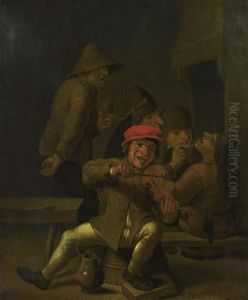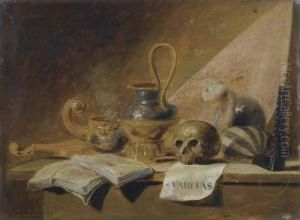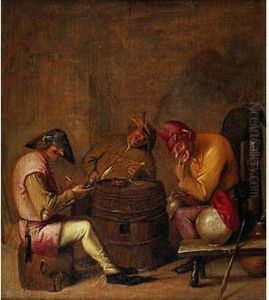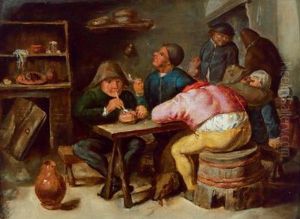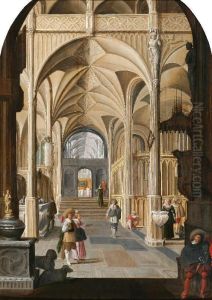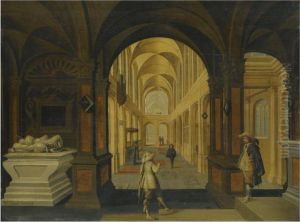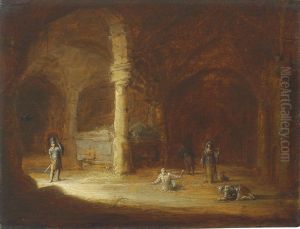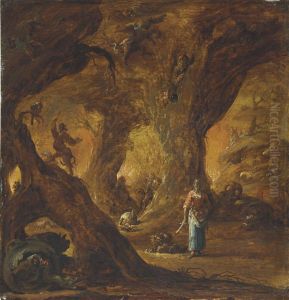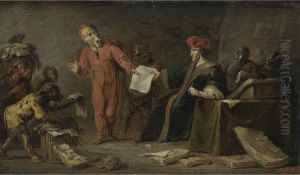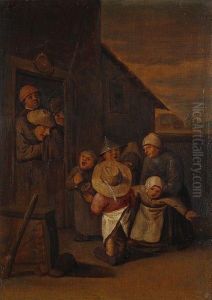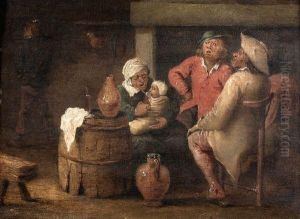Jan Jansz. Buesem Paintings
Jan Jansz. Buesem, also known as Jan Jansz. Buysen, was a Dutch Golden Age painter whose life details are not widely documented. His exact birth and death dates are not known, but his activity as an artist is recorded around the mid-17th century. Buesem specialized in genre paintings, particularly scenes of peasants and interiors. His work reflected the influence of fellow Dutch artists who focused on similar subjects, such as Adriaen van Ostade and Adriaen Brouwer.
Jan Jansz. Buesem’s paintings often depicted the daily life of the lower classes, imbued with a sense of realism and attention to detail. His use of lighting and composition showed an adept understanding of the techniques popular among his contemporaries in the Dutch Golden Age of painting. Despite his skill, Buesem did not achieve the same level of fame as some of his peers, and as a result, information about his life, training, and the extent of his oeuvre remains somewhat obscure.
It is believed that Buesem was active in Haarlem, which was a significant artistic center during the 17th century in the Netherlands. The city was home to the Haarlem Guild of Saint Luke, a guild for painters and other artists, but records confirming Buesem's membership are lacking or yet to be discovered. The last known record of his activity is from 1649, indicating that he was still alive and working at that time.
Because of the scarcity of information, Buesem's works are relatively rare and are primarily of interest to specialists and collectors familiar with the Dutch Golden Age genre painters. His legacy is overshadowed by the more prolific and well-documented artists of his time, but his existing works still contribute valuable insights into the social contexts and artistic practices of the period.
